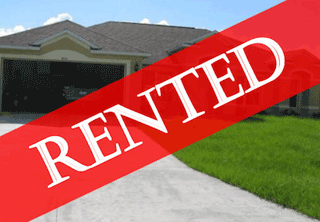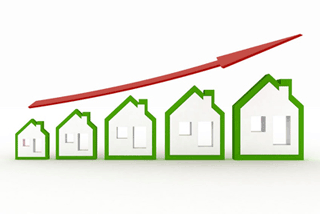Quote of the Week
“Many of our customers are telling us they are getting their dream home earlier than they thought possible, which is great news. Demand has been supported by historically low interest rates and more government support, such as the First Home Loan Deposit Scheme and HomeBuilder.”
NAB executive Andy Kerr
Vacancies Remain Low In Most Markets
 Vacancy rates remain ultra-low in most markets across Australia, with Sydney and Melbourne the exceptions, according to data published this week by SQM Research.
Vacancy rates remain ultra-low in most markets across Australia, with Sydney and Melbourne the exceptions, according to data published this week by SQM Research.
The national vacancy rate at the end of November was 2.1%, but five of the eight capital cities continue to have vacancies below 1%, while Brisbane has dropped from 2.0% to 1.8% in the past month. Most regional centres across Australia have very low vacancies, with many well under 1%.
As a consequence, rents are rising in many parts of the nation. SQM figures indicate that house rents rose in every capital city except Melbourne in the past month. Nationally, house rents have risen 8% in the past 12 months and apartments rents almost 5%.
The exceptions to the nation rule of low vacancies are Sydney (3.5%) and Melbourne (4.4%). However, further analysis shows that the high vacancy areas are mostly locations with clusters of high-rise apartments, while many suburban markets in the two biggest cities have vacancy rates well below 2%.
FHBs At Record Levels, Says NAB
 Young borrowers are flocking to outer city suburbs and regional Australia to get into the property market, says National Australia Bank. Lending data from the bank confirms a surge in activity by first-time buyers, who are taking advantage of high levels of government assistance and cheap finance.
Young borrowers are flocking to outer city suburbs and regional Australia to get into the property market, says National Australia Bank. Lending data from the bank confirms a surge in activity by first-time buyers, who are taking advantage of high levels of government assistance and cheap finance.
NAB is one of the two major banks that were assigned FHB deposit places under the Federal Government scheme which allows a FHB to secure a mortgage with a 5% deposit without need to obtain lenders mortgage insurance.
The bank found in the three months ending 31 October, housing finance for FHBs rose 21% compared with the previous period, with the strongest demand in Western Australia, Queensland and regional NSW.
On a national level, metropolitan first-home buying grew 17% over the period, while regional uptake grew 44%. Their activity is driving house prices higher in many regional centres across Australia.
NAB executive Andy Kerr says the mortgage rush from FHBs is at a level not seen in more than a decade.
Economy Poised For Strong Recovery
 Australia is well on track to put the pandemic-induced recession behind it, as unprecedented stimulus from government and the Reserve Bank has the economy on a faster-than-expected growth path, the nation’s top chief executives say.
Australia is well on track to put the pandemic-induced recession behind it, as unprecedented stimulus from government and the Reserve Bank has the economy on a faster-than-expected growth path, the nation’s top chief executives say.
Leaders have urged governments not to withdraw stimulus programs too quickly in the face of a global slowdown and urged that the economy be allowed to open up in line with health advice.
More than 80 chief executives across all sectors surveyed by The Australian say the economy was well-placed for a recovery in 2021, with confidence starting to return among consumers and business.
“A couple of months ago, I did not expect that we could get back to pre-Covid growth levels by late 2021,” National Australia Bank chief executive Ross McEwan says. “That’s my expectation now. With business conditions and consumer confidence rebounding, there’s growth opportunities for business, as well as new jobs and new opportunities.”
Coca-Cola Amatil chief Alison Watkins says she remains optimistic about the prospects for a robust recovery.
Prices Up Across Capital Cities
 The Real Estate Institute of Australia says the country’s housing market proved to be resilient over 2020 despite the impacts of the pandemic, with price rises recorded in most states over the past quarter.
The Real Estate Institute of Australia says the country’s housing market proved to be resilient over 2020 despite the impacts of the pandemic, with price rises recorded in most states over the past quarter.
Australia’s weighted average capital city median price for both houses and other dwellings increased over the September 2020 Quarter, the latest Real Estate Market Facts report by the REIA has found.
REIA president Adrian Kelly says the weighted average capital city median price increased 0.4% for houses and 0.7 % for other dwellings during the quarter.
Over the year to September 2020, the average capital city median house price rose 3.6% to $773,760, while other dwellings grew 2.9% to $596,750.
At $1,154,000, Sydney’s median house price continues to be the highest among the capital cities, 49% higher than the national average. Perth and Darwin have the lowest median house price across Australian capital cities at $480,000, 38% lower than the national average.
Prices Tipped To Rise 25%
 House prices could surge as much as 25% as mortgage affordability reaches levels not seen since 2002, according to BetaShares chief economist David Bassanese.
House prices could surge as much as 25% as mortgage affordability reaches levels not seen since 2002, according to BetaShares chief economist David Bassanese.
BetaShares’ estimates are based on the median city house price, combined after-tax income for an average couple, a 10% deposit and typical mortgage rates. The data implies 26.2% of after-tax income is devoted to mortgage repayments, compared with the average since mid-2004 of 32.8%.
House prices would have to rise 25% to reduce mortgage affordability to that 32.8% average, BetaShares chief economist David Bassanese says.
“History suggests that the market will find equilibrium under these circumstances through a lift in house prices, until mortgage affordability is reduced to the long-run average,” he says.
Bassanese points to 2002 when house prices surged due to this factor. “The last time our national mortgage affordability estimate was better than this was in March 2002,” he says. “In the following two years, national house prices rose 36%.”




